By Alison Hartzler…..
After shuffling dried sticks and leaves covering the hydraulic tank, we dug a little deeper into the seemingly endless pit of dirt and debris. There we found it, covered in maggots and mold, the skull of a rat, about the size of a coke can. This would be considered our initiation into our new barn find.
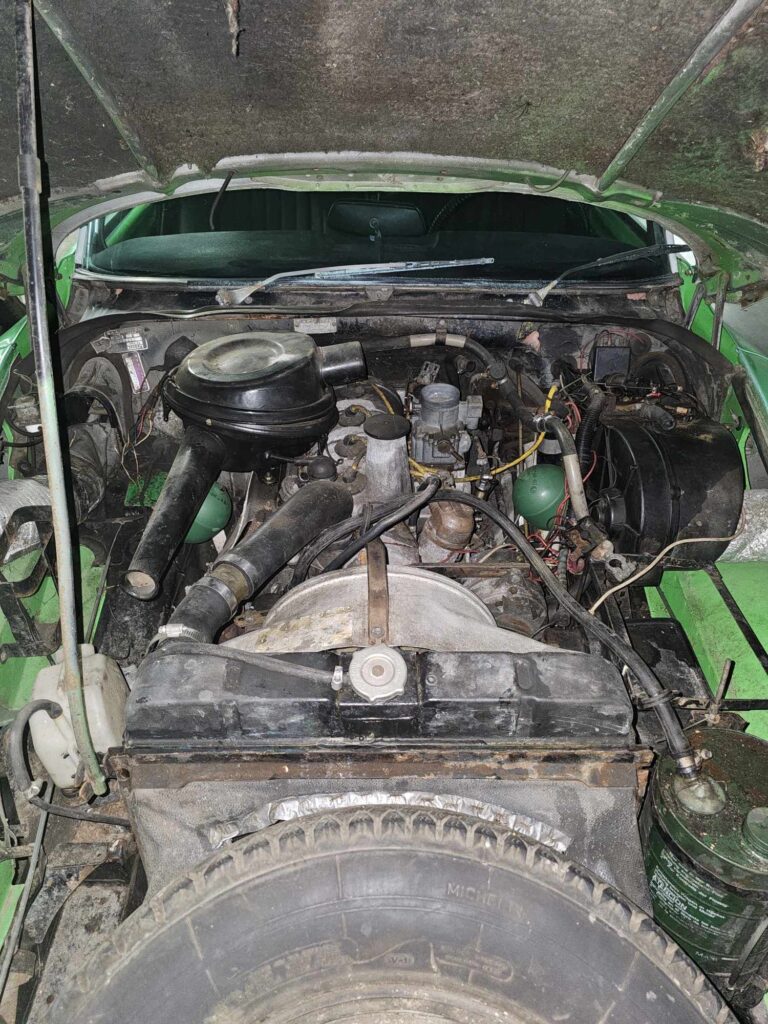
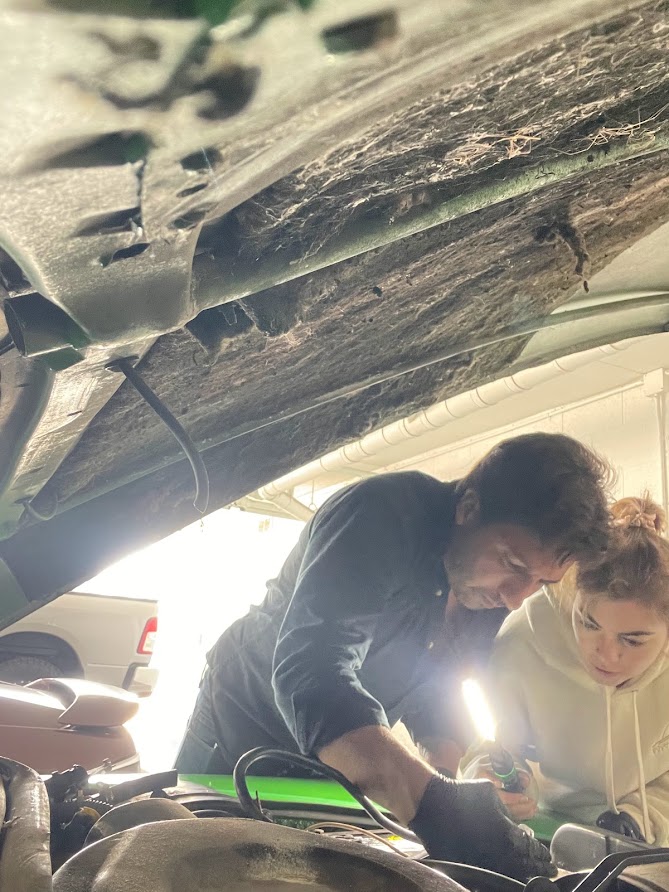
Cleaning has always been our first step in the restoration process. This not only allows for more familiarity with the car, but also helps locate immediate issues.
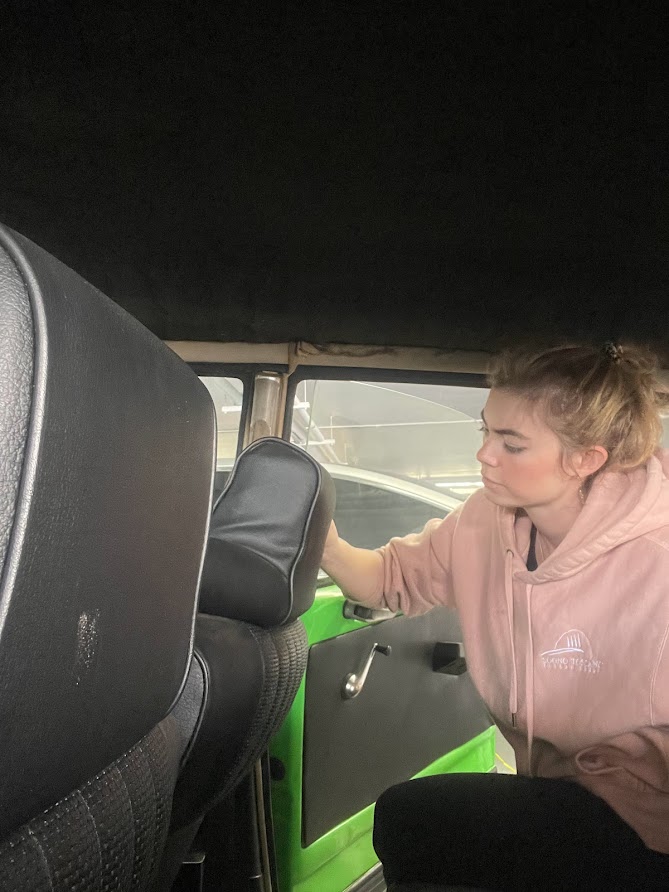
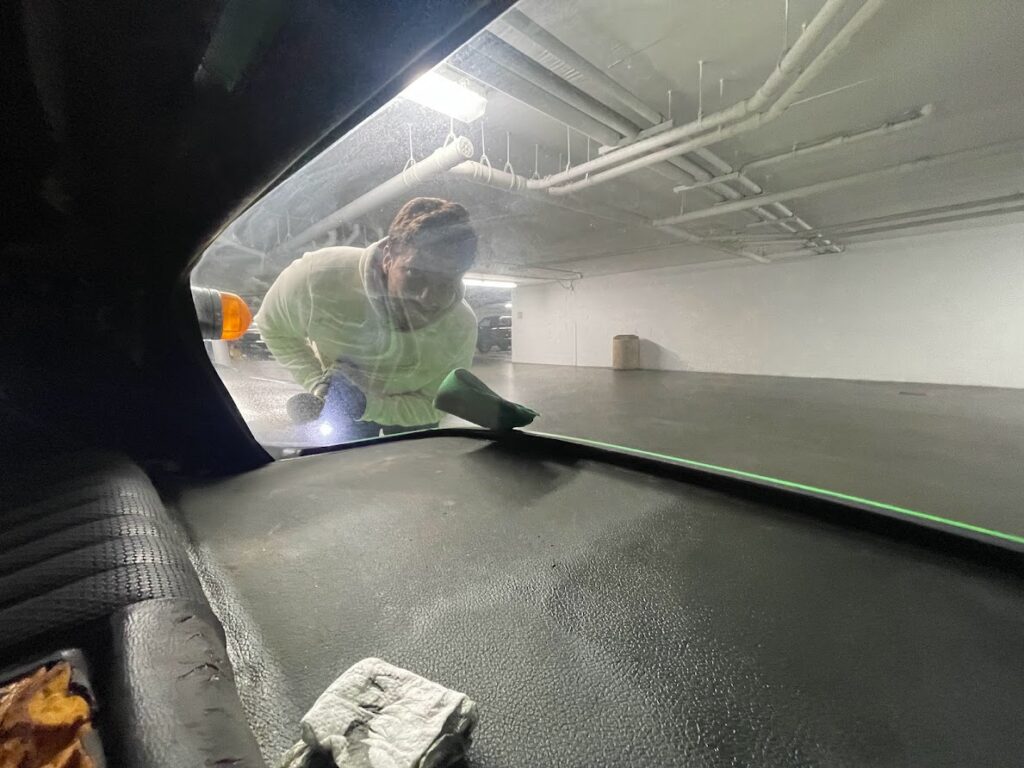
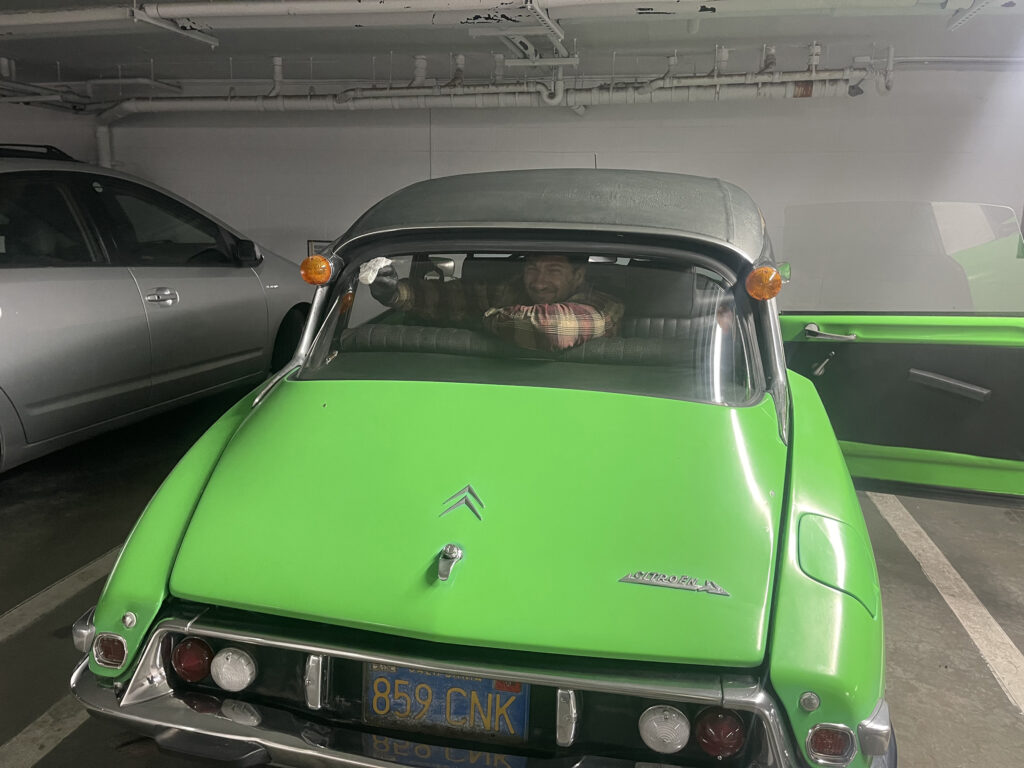

Meticulously cleaning the Citroën provided just that. While I detailed the interior, Armani went to work on the paint correction. Though we plan on painting Little Alien soon, we don’t want it looking abandoned in the meantime.
I was shocked at how much of a difference just one round of buffing made. In the process, we discovered just how much love had gone into this car before it sat. Cleaning the interior also offered great insight, but in the other direction. Though the seats had been redone, the car was then left to sit in a backyard for 20 years. This meant that the leather looked impeccable, but cracked with even the lightest touch. Also, the amount of spiders and insects that fell from the crevasse would have made me a great contestant for Fear Factor.
Beside the present need for new seats, we also noticed that the metal on the dash and steering wheel needs refinishing, the hinges on the boot need replacing, and the headliner needs redoing. Luckily, besides all the grease and mold that had been caked onto every surface, the interior was in rather decent shape.
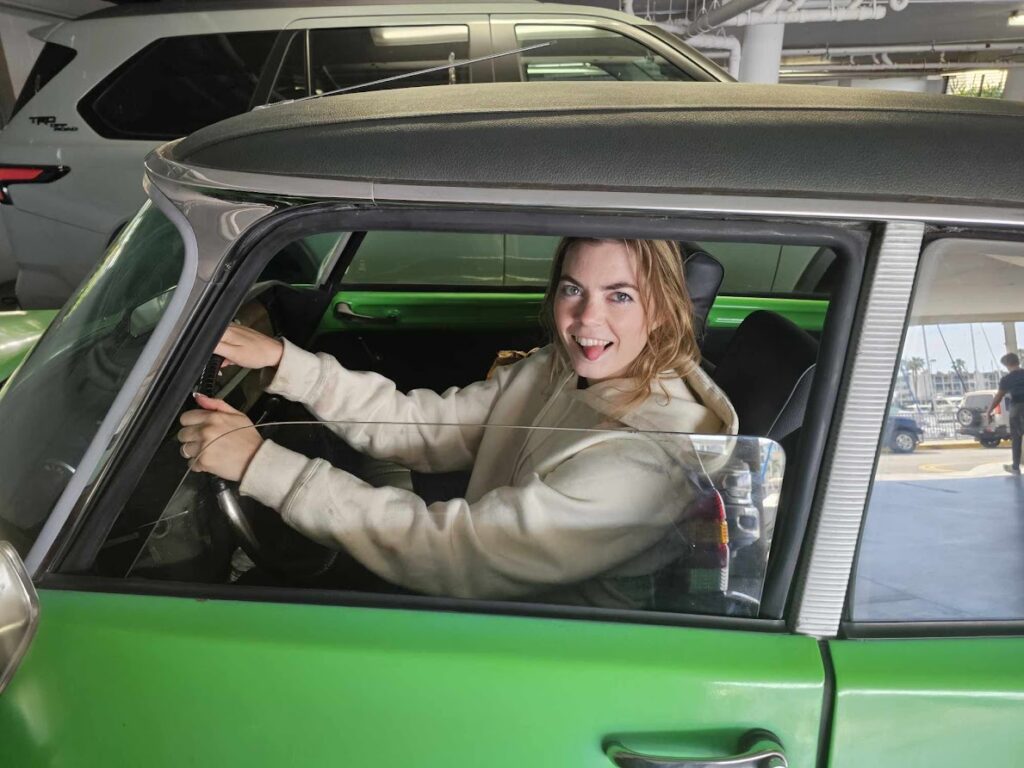
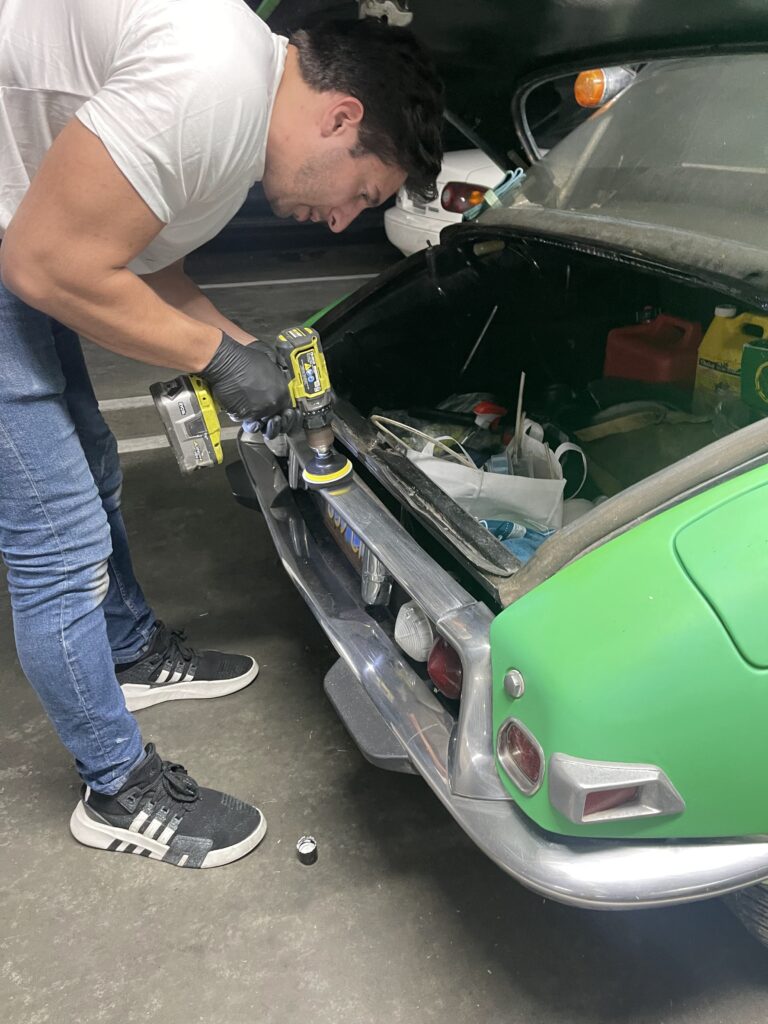
In between cleaning the inside and buffing the outside, we managed to start exploring the engine bay. Speaking strictly from a superficial perspective, it was horrible. There were somehow even more spiders and insects crawling and digging their way into nooks and crannies. Grease and dirt smothered everything, making components indistinguishable. We located the rat’s nest almost immediately. The rat’s tiny skeletal remains came soon after ( a tiny funeral was held in his honor). However, all the components were there, which was a huge bonus.
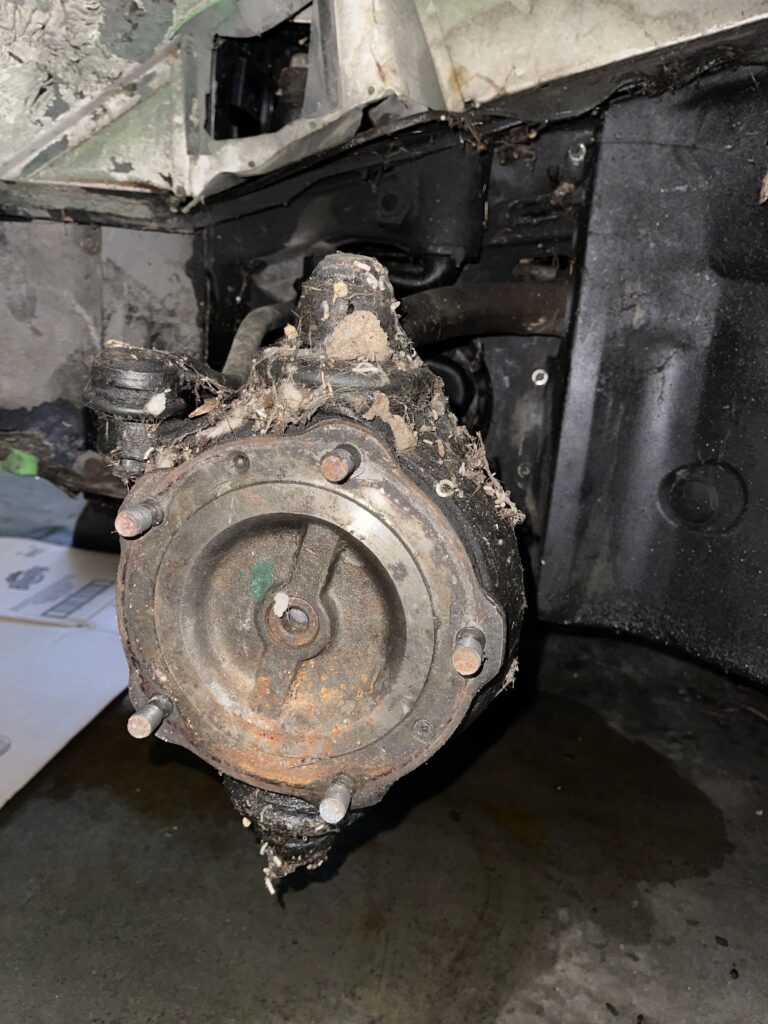
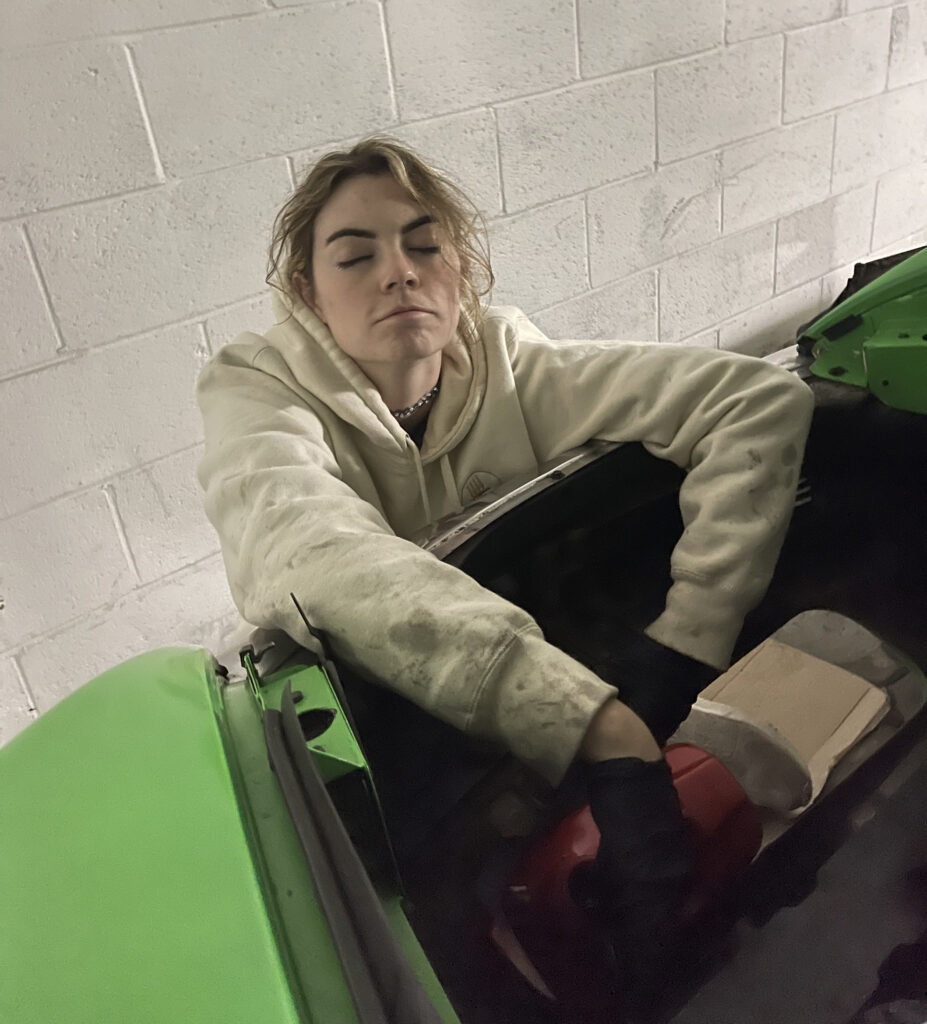
We knew Little Alien could run. Ken, our Citroën expert and avid contributor to Citroënvie! drove it onto the trailer by dripping fuel into the carburetor because the fuel pump was broken. Therefore, our first protocol to get Little Alien back on the road was to get a new mechanical fuel pump.
Looking back on the first article about trailering Little Alien home for the first time, we were desperate to get it in a ‘safe space’ as soon as possible. Because of this, we ended up parking it adjacent to a bustling walkway frequented by residents of the apartment building. We weren’t in anyone’s way, but we did quickly became a point of fascination amongst the crowd.
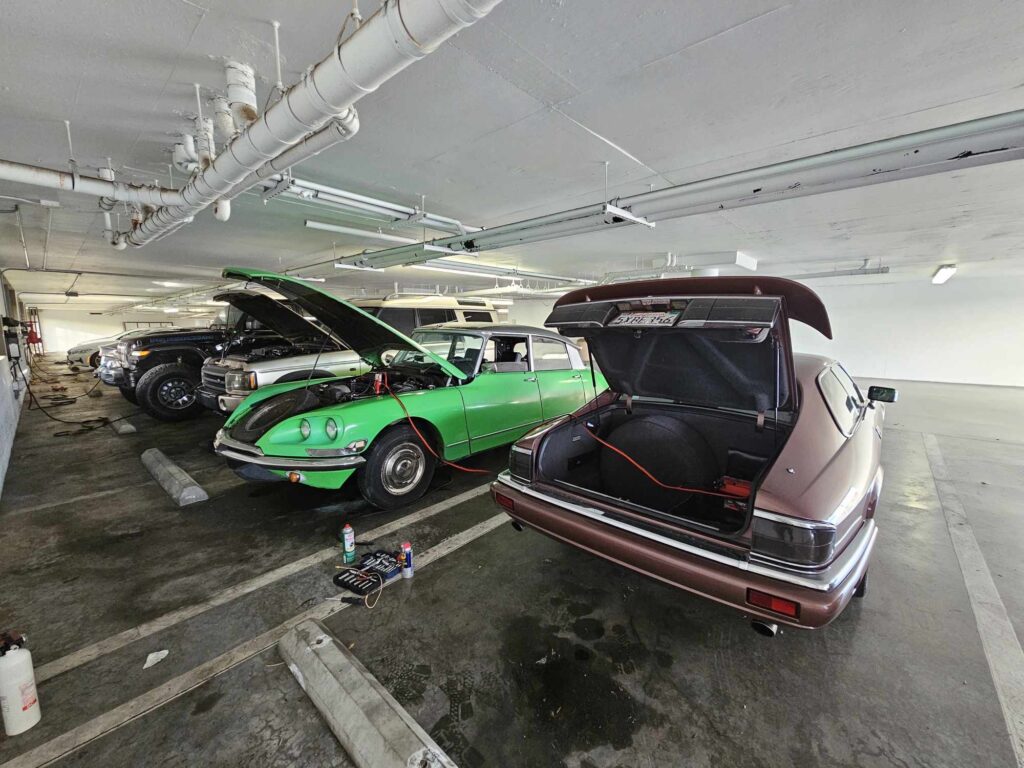
It was impossible to get any work done without someone coming by to comment, ask questions, or offer opinions. And of course we love talking about our new project! Some even had great insight to share about their own restoration projects. However, I could do without the occasional guy coming up calling me Sweetheart and asking if my boyfriend/ husband/ father was around to talk about it.
Regardless, a car like Little Alien draws attention, especially one such a bright color. Since we knew we had a lot of dirty engine work coming up, we were trying to stay off the radar. Therefore, moving Little Alien into a more secure, hidden spot became our first goal.
Replacing the old mechanical fuel pump was simple, as are most parts for cars of this era. (To compare, we recently spent 5 hours just replacing the alternator in our newer Range Rover). However, we were still unable to draw enough fuel to get the car on. After reinstalling it with a better seal, we still could not get its engine on. Then we tried priming the fuel pump through the carburetor, nada. We worked on this issue every which way imaginable for a week until we finally figured out our problem. Bad vacuum through the fuel line.

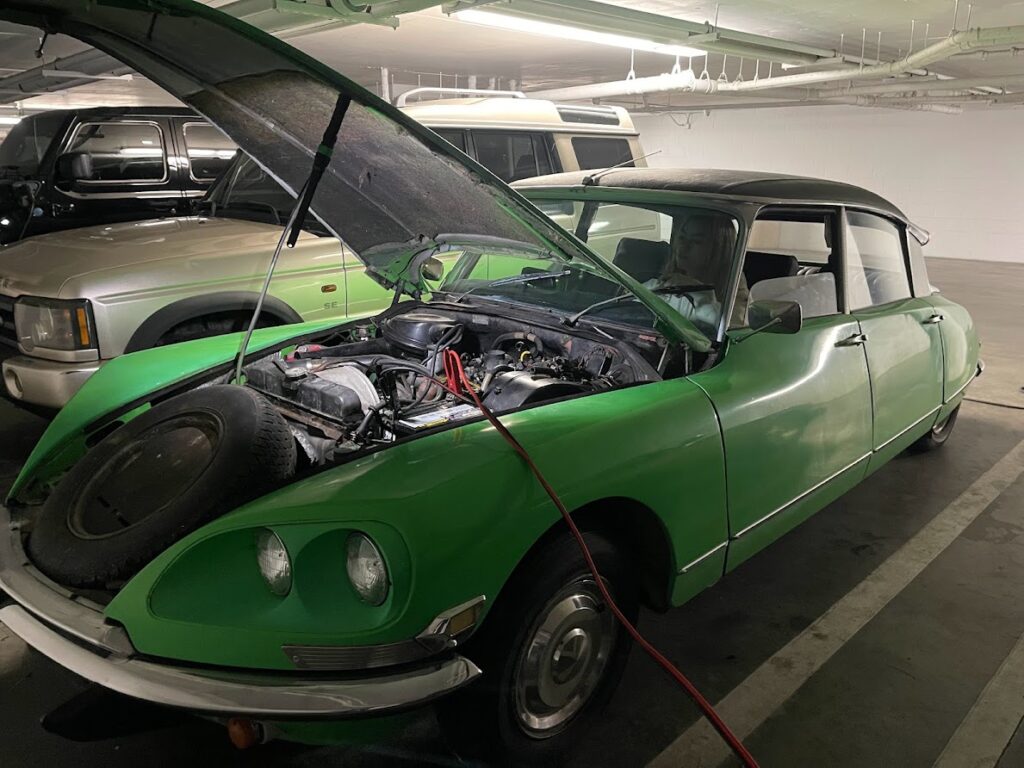

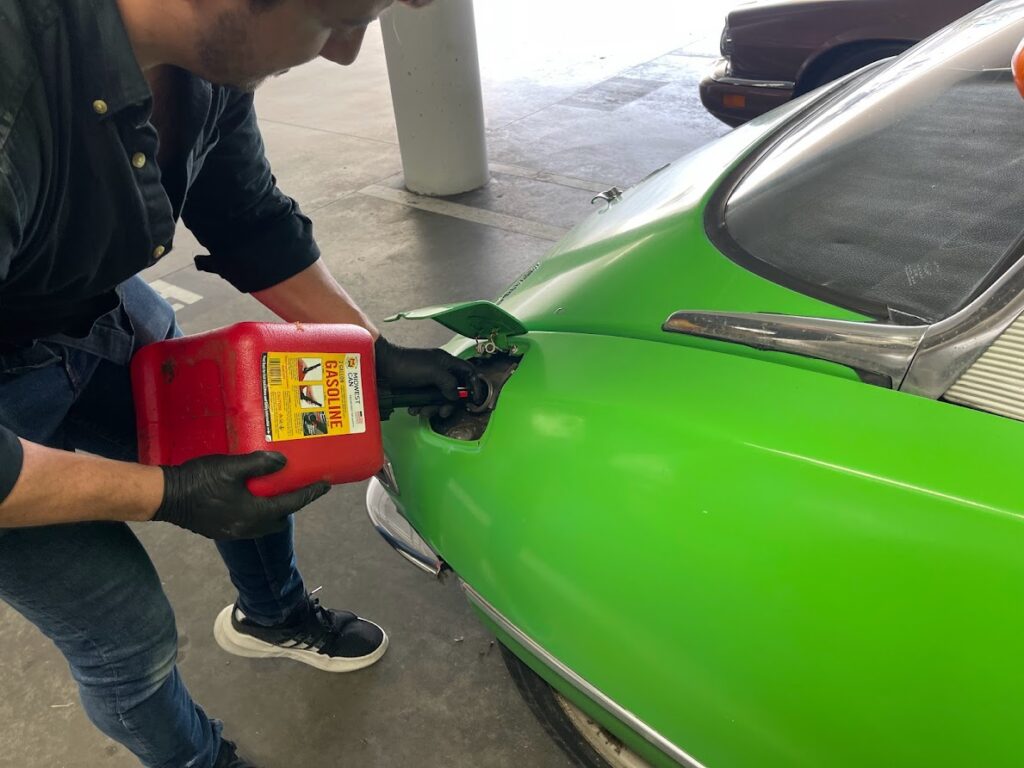
On the bright side, we did learn loads about the engine in the process, and also had a fun night of cocktails, pizza, and engine work with our two mechanic friends. Not all was lost!
Another bonus after this ordeal was that it forced us to start taking things apart and putting them back together. One of the biggest lessons my partner Armani instills is that it’s okay to take things apart, as long as they are a little nicer, cleaner, and better when you put them back together. I’ve found this is a great lesson for life as well, though I’m sure he only meant it to be applied to cars.
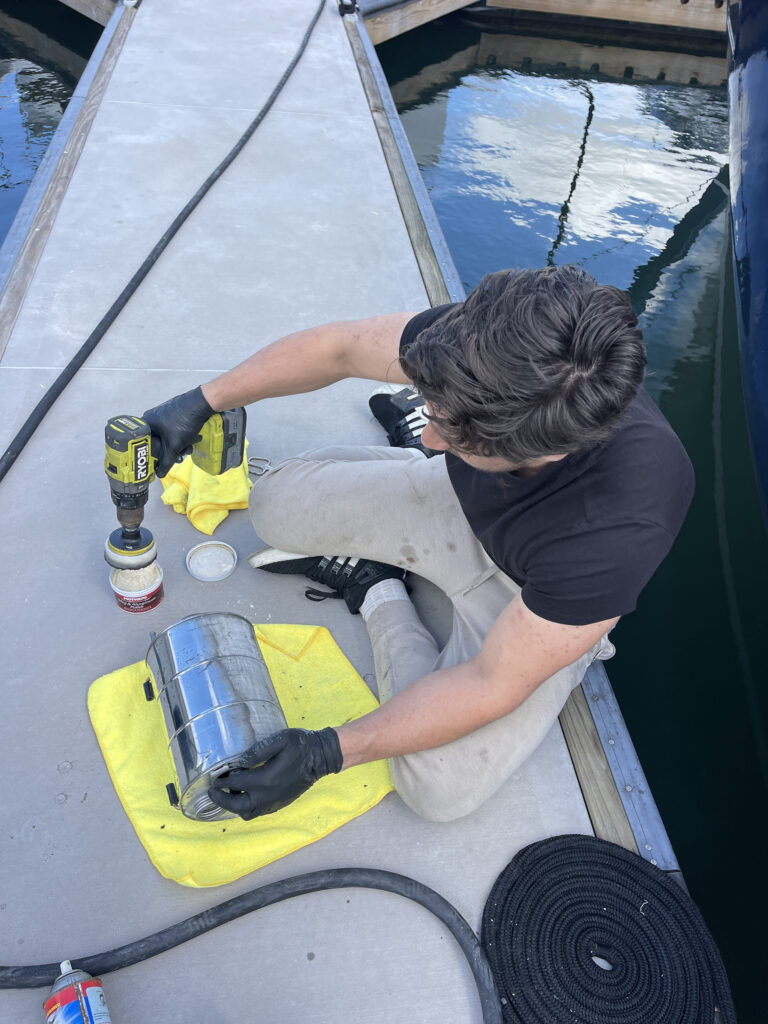
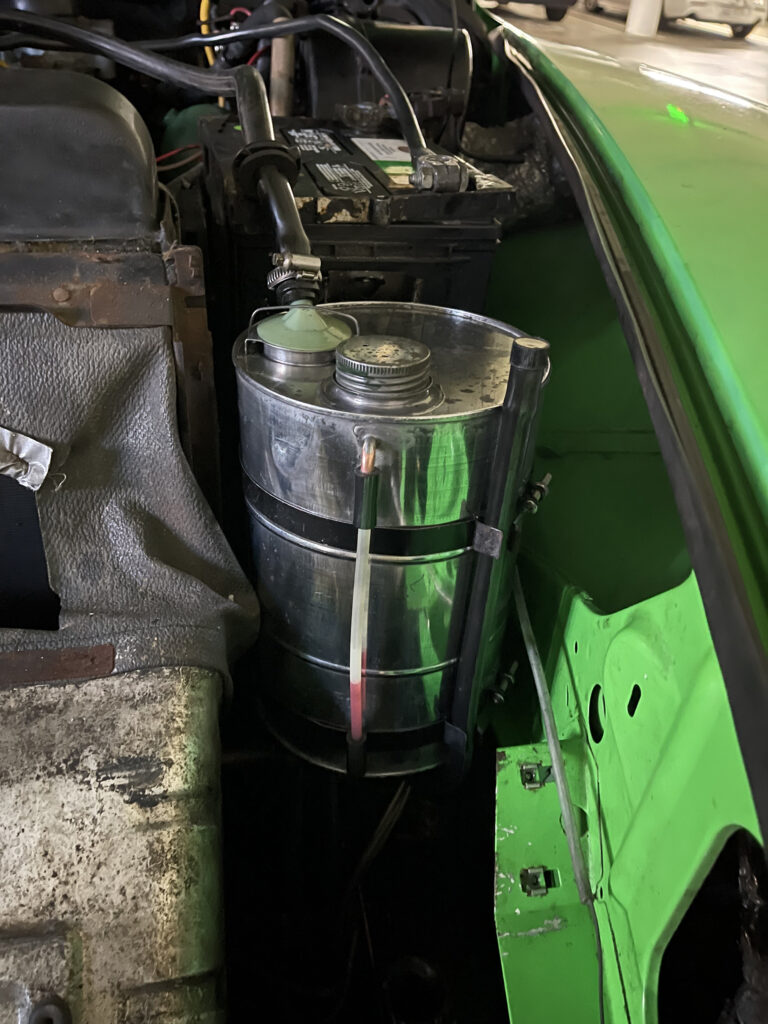
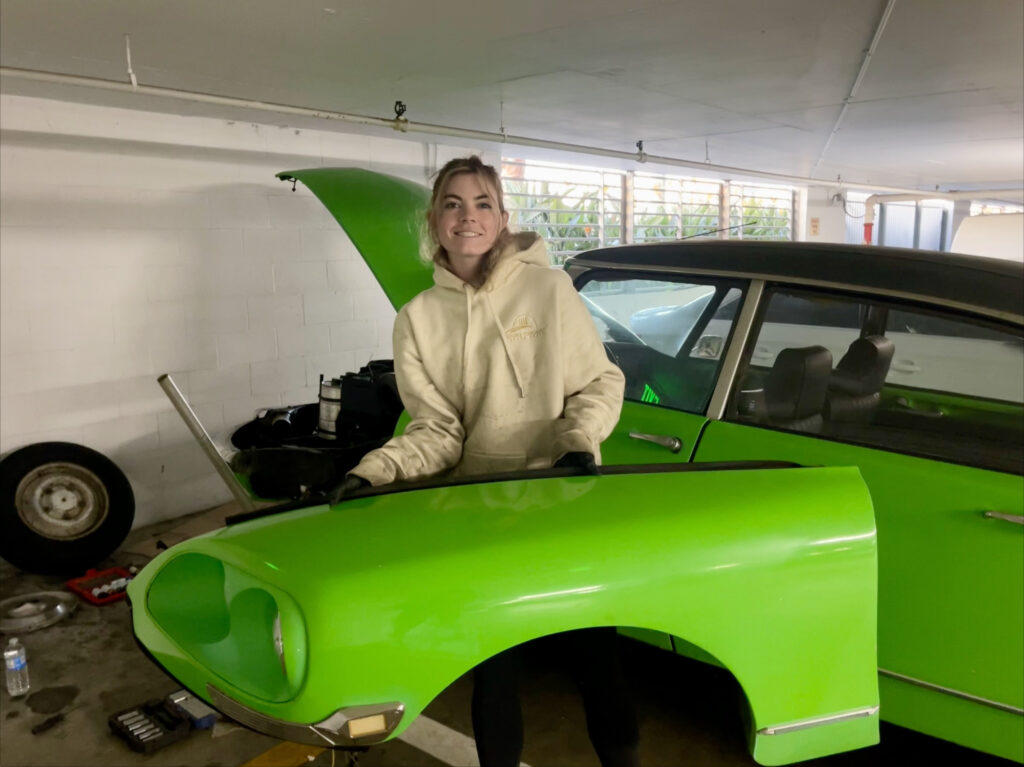
Therefore, the end product after a week of our heads jammed together in the spider/ rat/ insect infested pit was a cleaner engine bay, a better idea of the work needed to be done, and a car that could finally turn on.
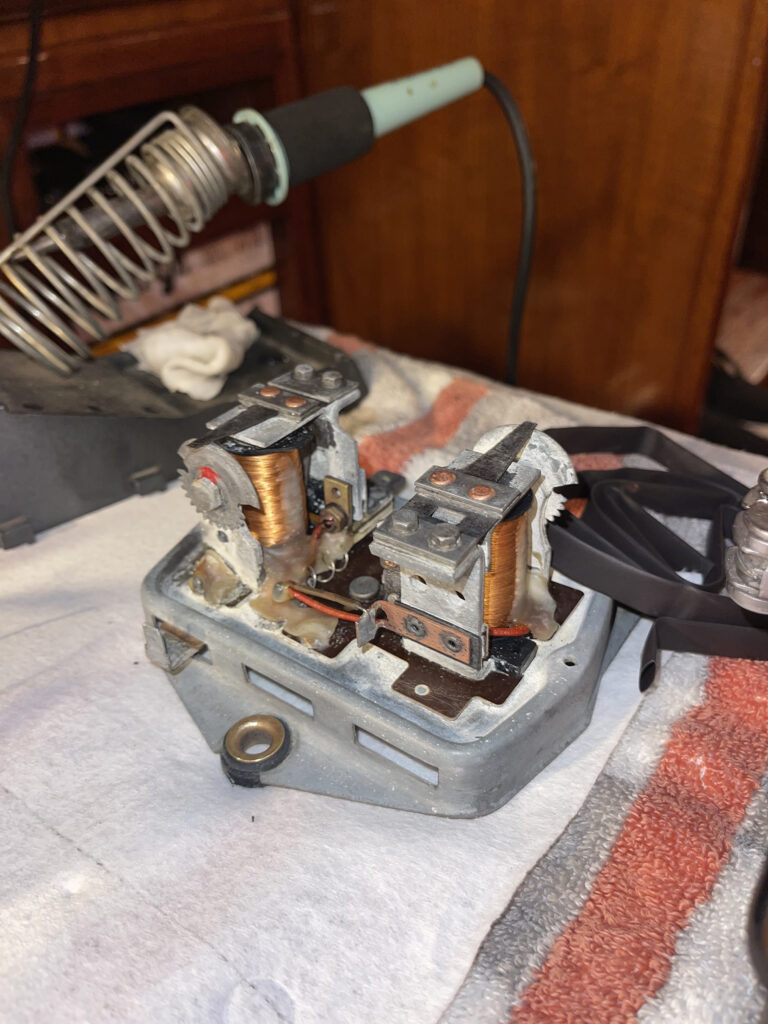


After countless hours of seemingly pointless work, the sound of Little Alien’s engine roaring was music to our ears. Not knowing how much time we had before something went wrong, we quickly made a plan to get it into the underground parking. The problem was, we still didn’t have brakes. This meant Armani drove while I sprinted ahead to make sure the gate stayed open long enough for him to roll right in.
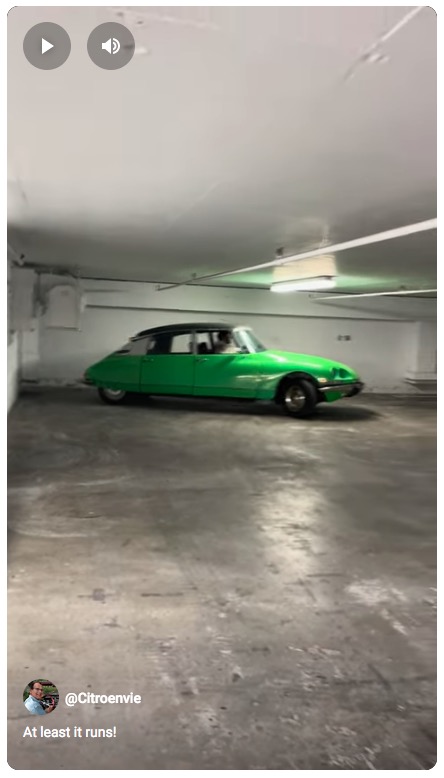
All was going well until we saw smoke pooling from the bonnet. Right after he made it down the ramp, he quickly realized the engine was overheating. Although we needed to stop the car in the nearest spot, the momentum from the hill was too great and we unfortunately “crashed” it into the brick wall. Don’t worry, the wall was fine. Little Alien, on the other hand, had a few bumps and bruises. The rubber overrider caused the stainless bumper to misshapen a tad.
The period of our restoration was led by fear; fear of the countless unknown issues, fear of not finding the right solution, and of course, fear of the creepy crawlies. Now it seems we have a much better understanding of our Little Alien and at least the start of some progress. And next time some guy calls me sweetheart, at least now I’ll be able to drive away in my working Citroën DS (it’s the stopping that might be a problem).
You can read Part 1 of Alison’s article on the DS21 resuscitation here: https://citroenvie.com/california-ds-dreamin/
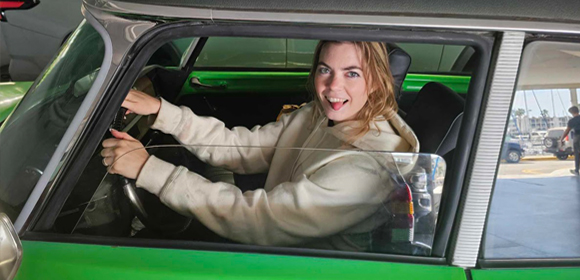

Keep up the great work! PS the emergency brake can be positioned to be used as a ‘regular’ brake in situations like these…)
Nice work Alison & Armani – you got the best of the collection. That was the owner’s major project but only partly done when he had the stroke. The waterpump was seized when I went to start the car, so I pulled a decent one from my spares to make sure the engine wouldn’t overheat. In spite of that, as I recall, after several short runs, the radiator cap blew water, so I pulled the thermostat which was evidently stuck closed. If you haven’t pulled the top radiator hose and found the thermostat missing, you’ll want to give it a new one.
Also, I believe a top solder joint around the radiator filler neck might have leaked, but only during the short overheat. Call me if you decide to pull the front calipers apart & I’ll pass on some rebuild tips.
Ken